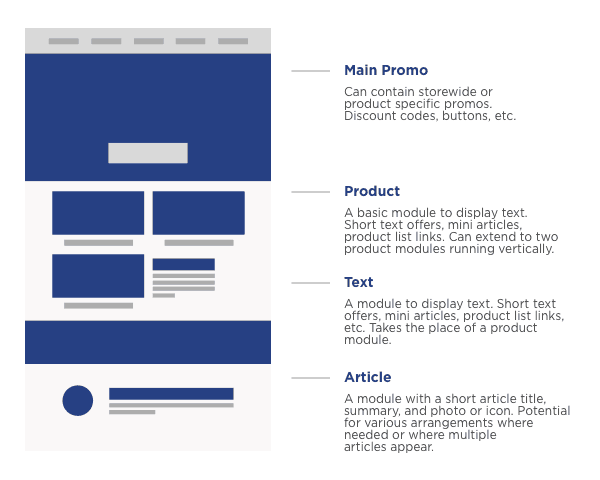Retailers often want to stay top of mind for their online and in-store customers, but don’t know where to start when it comes to keeping them engaged. Many have a social media account but don’t quite know how to stay active on email. However, based on what we have seen with our retailers, email marketing is the leading source of relationship building and sales for their store. Sending an email is an affordable and easy way to allow for more personalization than other channels like social media that require a more generic posting. To give you the confidence to stay active on email, we’ve written this article on email marketing basics – like what Email Service Provider to use and how to construct the perfect message.

Email Service Providers:
For Special Ordering retailers, we recommend starting your email marketing with MailChimp. Many people like to use this platform because it is easy to navigate and create campaigns on. MailChimp permits seamless list building, customization, and easy drag-and-drop template designs. Although there is a paid version with more testing and automation features, MailChimp’s “Forever Free” plan is a perfect place to start.
For our Shopify users, we recommend Rare.io. This is an email marketing platform that directly integrates with Shopify. It knows exactly who your top customers are, as well as what they are buying, and makes it extremely easy for you to segment and target to them with automated life-cycle campaigns and one-off promotional campaigns. Rare.io is currently free for retailers with less than 249 customer emails. Check out their pricing plans for all audience sizes here.
Once you make an account with your favorite email service provider, you can get started on crafting the perfect email. However, there are a few basic email best practices for every company that even professional marketers abide by. To help you keep track, we created a general list of guidelines below.
We recommend that you reference these tips when crafting an email for your first campaign, or when you are advertising your online capabilities as a participant in our ordering competition!
Inbox Basics:
From Field:
In order to let email service providers know that you are not spamming your customers, you need to customize the “from” field to have your or your company’s name. Whichever one you choose, make sure they are capitalized, spelled correctly, and a name your customers recognize.
Subject line:
To attract your customers and get them to open your email, write a short but well thought out subject line. This should be a welcoming sentence that accurately identifies the topic and context of your message. For example: “A special discount from Pete’s Pet Shop!”
Preheader:
The preheader is a preview of the contents of the email. Help your customers further understand why they want to open the email and what is in it for them if they do. For example, if you describe a special discount in the subject line, use the preheader to describe what you are discounting. Try to keep it concise and between 40-70 characters long. For example: “Save $10 when you spend $79+!”
Sending Time:
Send your campaigns at a time when you think your customers will be checking their email. For example, 9pm on a Saturday probably isn’t going to get that much activity. On the contrary, 12 pm or 6 pm on a weekday might be a great time for you to send a message because people are just taking breaks from work, and likely browsing their phones.
Images:
Hero Image
Use an engaging full-width image at the beginning of your email content with a strong CTA (call to action). Usually, the proper dimensions for images in an ESP are around 600-640 px. Make sure to include “alt text” that describes the image in case it doesn’t load on your customer’s computer or phone.
Product Images
If you are having a special discount on a certain brand, or want to display specific products, include several thumbnail images that link to their landing pages. These should be smaller images around 1/2 to 1/3 the size of the full-width hero. Make sure the brand for each is spelled out below the thumbnail image.
If you can, add explanations or information to give added value to the product images. Always try to give as much detail as you can on certain appealing diets or brands. The more benefits you can highlight, the more likely people are to be convinced to buy them. Just be careful not to write long-format paragraph text – nobody has that kind of attention span these days!
Text:
Greeting:
If you choose to send a more personalized email in a letter format, always add a greeting to the beginning of your message to avoid looking bossy. Use “Dear” to add a level of formality to the message. For best results, personalize your email with your contacts’ first names. If your email list contains first names in addition to email addresses, MailChimp allows for you to dynamically customize names for each contact, simply click “Merge Tags” and select “First Name.”
The Body:
Take time to communicate with clarity. Use complete sentences with proper grammar and punctuation. Read your email out loud to put final touches or correct anything that is grammatically incorrect.
Make sure to have engaging content and tell a compelling story. People are more likely to pay attention to a message when it is explained in story form. Try to consider this when you are getting the word out on a promotion or new product.
Closing:
If you have chosen a letter-style format, politely close out the email. Not having a closing may be perceived as demanding. Include your name as a final touch. For example: “See you soon! – Pet’s Pet”
Interested in learning more about email marketing? Check out our articles on How to Build a Great Email Welcome Series or Creating Great Cart Abandonment Emails.
